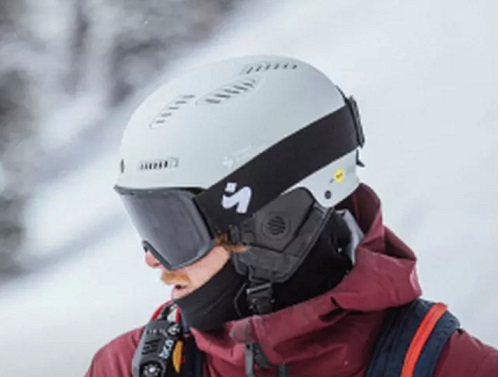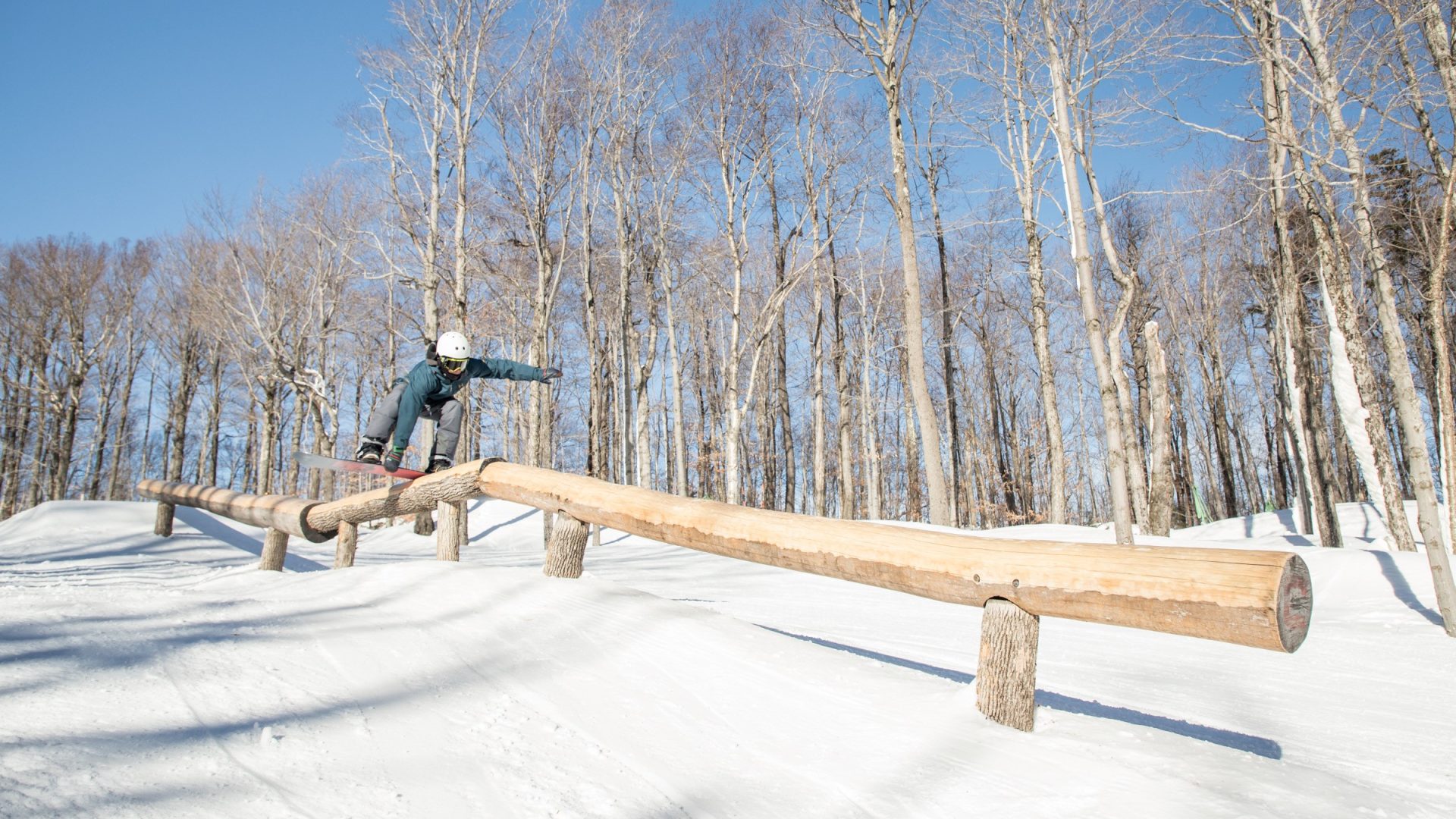Snow Helmets FW24/25 Retail Buyer’s Guide
The use of the snow helmet is widespread. Increased awareness of head protection will keep it steady. Users welcome all advances in safety and comfort. By Rocio Enriquez.
The history of helmet use amongst snowboarders is one of steep increase over the last two decades. Recent research (S. Niemann, F. Bürgi, O. Brügger, “Helmet use in skiing and snowboarding in Switzerland during the past 20 years”) shows that 92% of Swiss snowboarders use helmets, compared to 20% twenty years ago. A trip to any other European mountain will confirm this trend. This is driving helmet makers to develop the safest and most comfortable product possible. Safety is useless without comfort. No safety feature can protect a head that is not wearing the helmet due to discomfort. Impact protection technology is paired with lightweight constructions, fit adaptability, and good ventilation. Styles offering this combination have topped sales. Some examples are Salomon’s Husk Prime MIPS helmet, Head’s C-Series, Giro’s Owen, or Smith’s Vantage, Level and Mission. Other impact technology driven sales have been Rossignol’s Alta Impacts Strato, Sweet’s MIPS styles Trooper, Igniter and Switcher, and Anon’s WaveCel collection. After safety and comfort, goggle integration, audio compatibility and a sleek design are desirable features.
FW24/25 helmets.
Every known version of impact protection technology makes it to helmet construction. Nothing is benched. MIPS is a favourite. This technology reduces the rotational motion of the brain in the event of impact. Sweet integrates it in their new Adapter all-mountain helmet. It is paired with a three-piece shell in-mould construction that optimises strength, and a multi-density, shock-absorbing structure. Smith features MIPS in their new Accel helmet and their best-selling Nexus one, both with complete Koroyd coverage. Bollé’s new additions, the X-Fusion and the Ypsos, are also available with MIPS. Dakine enters the helmet market with two ABS injection moulded hard-shell styles, the Day Tripper and the Charger. The latter features MIPS. Salomon offers an MIPS alternative to their Husk Prime and their Brigade, this last one with added EPS4D safety technology.
Giro’s Owen and new Tenet helmets feature their proprietary Spherical Technology powered by MIPS. “The new Tenet model is a Hybrid shell that offers durability with a hard-shell upper part and keeps the weight to its optimum with in-mould lower sidewalls”, says Darius Heristchian. MIPS can also be found in Protec’s Apex helmet and POC’s new Calyx. “The Calyx, which is certified for snow, bike and mountaineering, will be a key addition to the line-up”, says Damian Phillips. Prosurf is starting to implement MIPS too. Anon uses WaveCel. “Upon impact, it works in three ways. First it flexes to help divert impact force away from the head, then in crumples to help absorb impact energy and finally, the cells glide to distribute rotational force, redirecting energy away from your head”, explains Benjamin Schwarz. Their WaveCel styles Merak, Logan and Oslo have a very lightweight in-mould construction. Oakley presents the new MODBC, loaded with technology specifically designed for the back country. Rossignol sticks to it IMPACTS technology. “Developed by taking into account the real conditions in which helmets are used, it offers improved protection against multiple impacts, without compromising comfort or aesthetics”, says Margaux Joly.
Wearing comfort drives the design. Dakine’s helmets feature an adjustable fit system dial, an open cell padded lining and removable ear pads. Rossignol’s Fit impact complements their padded liners and ear pads with fixed vents for temperature management. Giro combines an Ionic+ Fleece lining with their Thermostat ControlTM. For fit adjustment, they work with their In FormTM 2 fit system. Salomon’s Brigade offers a removable liner and integrated google retainer that seamlessly tucks away. Smith throws in the mix a sweat wicking IonicTM antimicrobial liner and offers the new BOA®360 fit system. This system is also present in Anon’s models and in the new Bollé X-Fusion helmet, which is built with a merino/lyocell padding. Sweet works with their Occigrip fit system to dial the fit on the fly.
Head uses their patented Sphere Fit system, featured in their new Rev Rethink and Cinema Pro styles. Their junior styles Mojo and Maja Paw offer 2D adjustability in size and fit, allowing the helmet to grow with the user. FidLock® magnetic buckles are found across many collections, with brands like Dakine, Smith, Anon, Head, Giro, Bollé, and Sweet using them. Ventilation is important. Oakley’s MODBC and Salomon’s Husk Prime focus their designs on it. Anon has loaded their Merak WaveCel with nineteen ventilation channels. The Oslo WaveCel offers two integrated vents to keep air circulating for fog-free goggles. Poc’s Calyx, both in its standard or carbon version, feature deep ventilation channels and adjustable vent openings on the top.
Style trends favour sleek, minimalist designs. In this category we find Anon’s Logan and Oslo, Salomon’s Husk Prime and Brigade, Rekd’s Elite helmet, Protec’s Classic Snow, and the skate-inspired, new Rodeo helmet by Smith. There is some space for visor styles too. Head offers visor versions of their junior Mojo and Maja Paw styles, and the Cinema Pro for adults. “The CINEMA helmet with its outstanding free-floating visor construction offers an unrestricted field of vision for the wearer. Its ventilated visor can easily be exchanged with one click”, explains Katahrina Acham. Bollé’s new X-Fusion has a fully cylindrical integrated photochromic visor. “The X-Fusion system allows for a flawless harmony between the helmet and the visor, including for people wearing ophthalmic glasses”, says Françoise Sévenier. Salomon and Oakley offer spare replacement lenses for their visor models. Audio compatibility is an important selling point. Dakine and Anon make all their helmets audio compatible. Smith’s helmets are designed to integrate the Aleck audio systems, both wired and wireless versions. Sweet offers audio solutions in cooperation with Outdoortech. Protective pouches are welcome accessories. Head includes a helmet pouch in the box of their top-of-the line helmets. Their Rachel and Radar helmets include a reusable fabric visor cover to protect or clean the lens. Prosurf also offers visor lens covers.
Looks.
The seasonal palette is populated by neutral tones, with a sprinkle of bright colours for those who like to stand-out. We find more feminine colours, like variations of pink and lilac, to appeal to the female share of the market. Classics like black, grey, or dark blue keep a steady presence. Cross-merchandising of the helmets with other products is important, as expressed by Rossignol, Giro, and Salomon. Head keeps their Intermix design strategy that enables combination of any helmet with any goggle. Anon bears in mind the seasonal pallet of some top technical outerwear brands when choosing their colours. There are many collaborations. Smith continues to work with the North Face with a co-branded version of their Summit helmet. They have a new collaboration with She Jumps, a non-profit that promotes the participation of women and girls in outdoor activities. They also continue their partnership with the High Fives Foundation. Head continues their collaboration with Nickleodeon through their unique Paw Patrol helmets for juniors.
Sustainability.
There is an increase in the use of sustainable materials. Rossignol uses 100% recycled polycarbonate for the outer shells. Their foam is made of 20% recycled cork and 80% EPP, their padding and straps use 100% recycled polyester and their earpads are made of hemp. Salomon announces a big launch for February 2024. “We know that most helmets (if not all) are buried in landfills or incinerated. That’s why we developed a new helmet that is fully recyclable” announces Benjamin Raffort. Head’s new Rodeo helmet uses 68% recycled or upcycled materials. The new Rev Rethink and Radar Rethink feature recycled polycarbonate and fleece, and sustainable materials like cork and cotton. Bollé continues with their React for Good programme that implements over 20% of recycled or bio-based materials in their product design. Dakine’s helmets are made of 30% recycled ABS injection moulded hard shell, 100% recycled EPS foam liner, and 100% recycled PET webbing.
Most brands monitor their manufacturing processes. Sweet is committed to achieving net-zero greenhouse emissions across their entire chain by no later than 2050. They are transitioning to cleaner energy sources and evaluating raw materials to identify lower-impact options. Head’s Rethink programme oversees waste reduction and the use of recycled or certified raw materials. Oakley’s new MODBC will use a greener manufacturing process that uses half the power. Packaging is a great way to lower the carbon footprint of a product. Smith has removed plastic from their products. Their retail boxes are made of post-consumer recycled cardboard and designed to fold flat for storage or disposal. They have also re-engineered their helmet boxes with an insert that cradles the helmet for safe shipment. Oakley has also started replacing their existing packaging for more environmentally friendly boxes and inks. Head only uses certified cardboard boxes, avoids plastic bags and see-through windows, and uses only water-based inks for printing.
Retailer Support.
Technology and sustainability will be the themes of dedicated marketing stories. An important way to communicate them is through product training. Salomon will offer retailers a training book with detailed information. Head is developing a lot of videos for this purpose. Staff training is equally important for Smith, Sweet and Anon, who carry out clinics. In-store materials are important to carry the message on to the consumer. Dakine is developing a new POS programme. Smith has added significant resources to this division. Head offers a high-quality and sustainable metal branded helmet slat wall holder with mannequin heads.
Their dedicated displays for their Paw Patrol collaboration can hold twenty to thirty helmets. Giro and Salomon develop POS assets that explain their technologies. Visual content is paramount. Most brands produce videos and pictures that retailers can use in their social media. A lot of this content is created by ambassadors and athletes. Some brands offer retailer incentivisation. Anon and Smith work with the ENDVR app. Dakine has developed a premium dealers’ programme that allocates a special budget to each selected shop. The implementation of measures such as earlier ordering cycles and increase of carry over products has offered positive results. Most brands report healthy stock levels and good positioning to meet delivery timelines. Consumers are keen to snowboard and conscious about head protection. Let it snow.

































